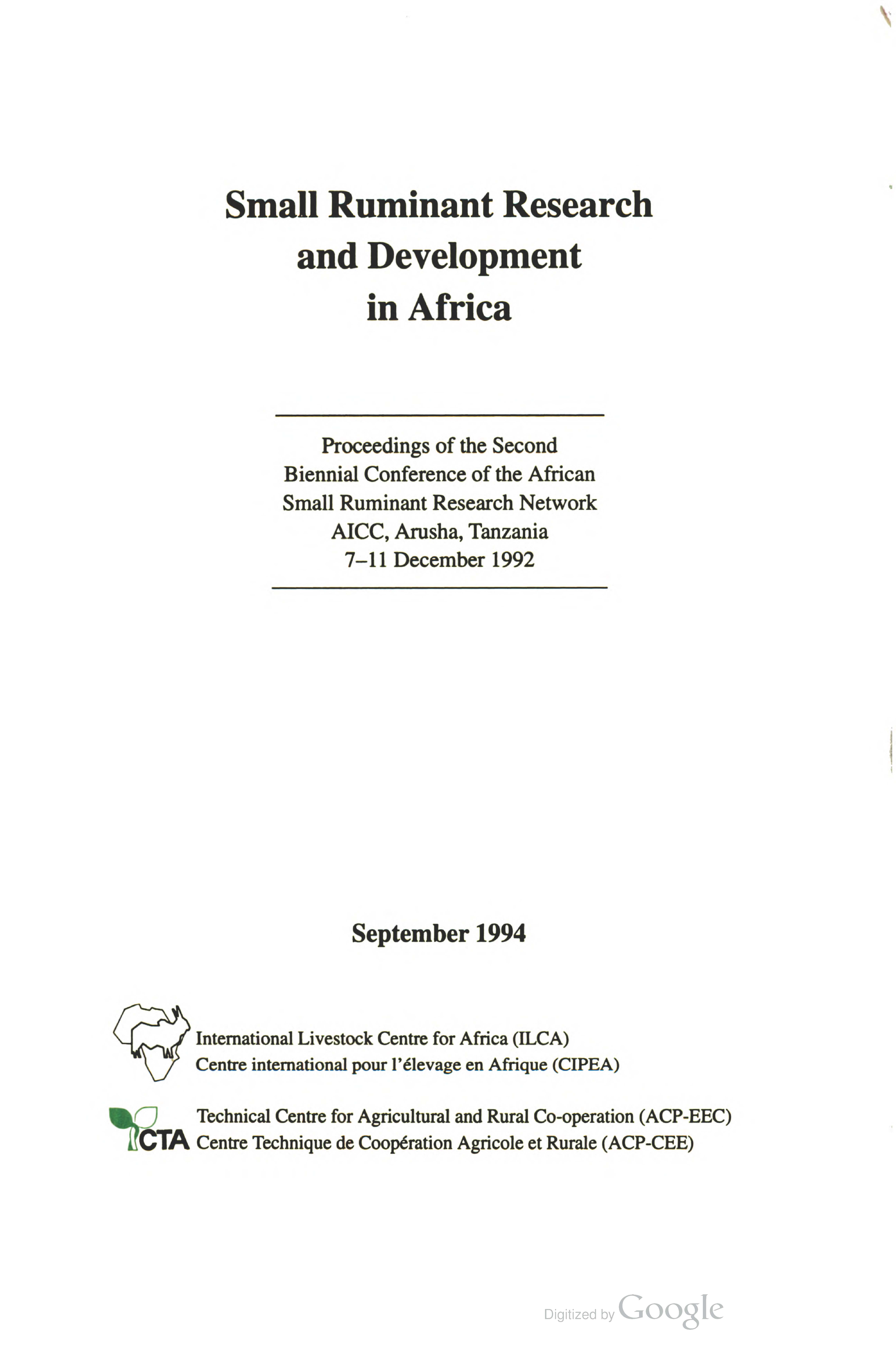Productivity of Blackhead Persian sheep in Tanzania
Abstract
Weight of lambs weaned (at 150 days) per ewe per year (Index D, per kg liveweight of ewe per year (Index II), per kg metabolic body weight (W0.73) of ewe per year (Index III), and per lifetime of ewe regardless of ewe weight (Index IV), were computed for 3022 ewes at Malya and West Kilimanjaro research centres in Tanzania. The data analysed covered a period of 24 years (1965-1988). Least squares means for the four respective indices were 24.6 kg (SE 3.19), 675 g (SE 15.7) 1.8 kg (SE 0.04) and 63 kg (SE 1.6). Year, seasons and location significantly (at least P<0.05) affected all the indices except index IV which was not affected (P=0.59) by season. All indices showed a tendency to decline during most of the study period (1966 through 1981). Indices II and III exhibited a small recovery thereafter but this was not subsequently maintained. Dry season lambing was associated with the higher productivity indicated by index I (P<0.01) and index II (P=0.0). Productivity at Malya was consistently superior (P<0.01) to that at West Kilimanjaro, being 3 kg, 152 g, 0.45 kg and 7.2 kg better, respectively, for the four indices. Although Malya was superior to West Kilimanjaro in lamb weaning weight, a large proportion of the between-station differences in productivity indices was attributed to differential preweaning lamb mortality.

